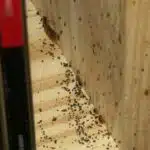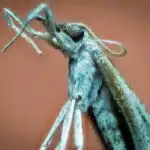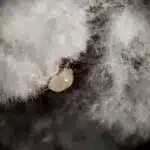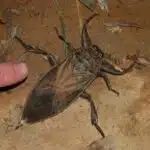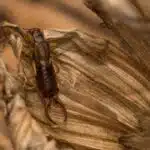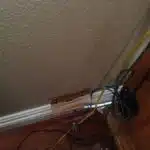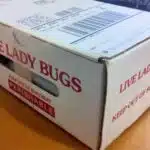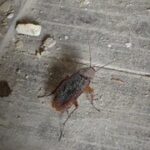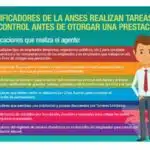Flies are one of the most common and annoying pests that invade both indoor and outdoor spaces. These winged insects are known for their ability to spread diseases, contaminate food and surfaces, and cause general discomfort to humans. Getting rid of flies can be a challenging task, especially if you don’t know where to start. However, with the right tools and strategies, it is possible to control and eliminate these pesky insects from your home or business.
As a pest control expert, I have encountered numerous cases of fly infestations in both residential and commercial settings. From my experience, I have learned that prevention is key when it comes to controlling flies. This article aims to provide you with practical tips and techniques on how to get rid of flies indoors and outdoors. Whether you are dealing with a minor fly problem or a full-blown infestation, the information provided here will equip you with the knowledge necessary for effective fly control.
Identifying The Types Of Flies
Flies are a common nuisance that can be found both indoors and outdoors. They belong to the order Diptera, which means “two wings.” There are many types of flies, some of which include house flies, fruit flies, blowflies, and horseflies. Each type has its unique behavior and habitat preferences.
House flies are commonly found in homes and other indoor spaces. They have a strong affinity for garbage and usually deposit their eggs in spoiled food or animal feces. Fruit flies, on the other hand, prefer fermenting fruit or vegetables as their breeding ground. These tiny pests are often seen hovering around overripe bananas or apples left out on kitchen counters.
Blowflies are known for their distinctive metallic coloration and are attracted to decaying organic matter such as dead animals or plant debris. Horseflies bite humans and other animals to feed on blood. They typically inhabit wooded areas near streams or ponds where they lay their eggs in moist soil.
Understanding fly behavior and habitat preferences is crucial when dealing with an infestation. By identifying the type of fly present, you can determine the best course of action to prevent future problems. The next step is to understand the life cycle of flies and how they reproduce to effectively eliminate them from your environment.
Understanding The Life Cycle Of Flies
Flies are known to reproduce quickly and in large numbers, making them a nuisance for many households. Identifying their breeding habits and larval development stages is essential for effective control strategies. The female fly lays eggs that hatch within 24 hours and the larvae feed for up to two weeks before emerging as adult flies. Knowledge of the fly life cycle can help to implement effective pest management strategies to reduce the number of flies indoors and outdoors.
Breeding Habits
Preventing breeding is key to getting rid of flies indoors and outdoors. Flies breed in damp areas, such as garbage cans, compost piles, and pet waste. They can lay hundreds of eggs at a time, which hatch into maggots within 24 hours. As such, it is crucial to keep your surroundings clean and dry. Regularly dispose of garbage and clean up after pets. Also, make sure that water sources are not stagnant.
Fly repellent techniques are a great way to control fly populations. There are several natural options available that do not involve harmful chemicals. One effective method is to use essential oils like citronella or eucalyptus in diffusers or on cotton balls placed in strategic locations around your home or outdoor area. Fly traps containing attractants like honey or vinegar can also be used to lure the flies into a sticky trap.
In conclusion, understanding the breeding habits of flies is important when trying to eliminate them from your surroundings. By preventing breeding through proper sanitation practices and using fly repellent techniques such as essential oils or traps, you can effectively control their population both indoors and outdoors while keeping your environment safe from harmful chemicals.
Larval Development
Understanding the life cycle of flies is crucial in controlling their populations. One important stage to consider is the larval development. After hatching from eggs, maggots emerge and begin feeding on organic matter like rotting food, manure, or decaying carcasses. To prevent further infestation, it is vital to focus on preventing larval development by removing potential breeding sites such as garbage cans, compost piles, and animal waste. Larvae thrive in warm and moist environments, so ensure that these areas are kept dry and clean.
One effective way to prevent larval development is by using effective larvicide products. These products contain chemicals that kill fly larvae before they can develop into adults. However, it is important to choose a product that is safe for your environment and does not harm other beneficial insects or animals. Some natural alternatives include diatomaceous earth or beneficial nematodes, which are eco-friendly options that specifically target fly larvae.
Preventing larval development not only helps control fly populations but also reduces the risk of disease transmission caused by flies. By following proper sanitation practices and incorporating effective larvicide products, you can effectively eliminate potential breeding sites and reduce the number of flies around your surroundings while keeping your environment safe for you and others.
Assessing The Severity Of The Infestation
Understanding the life cycle of flies is crucial in developing effective strategies for getting rid of them. Once you have identified the stage at which the flies are, you can target that specific stage with an appropriate control method. However, before implementing any control methods, it is essential to assess the severity of the infestation.
Assessing the severity of an indoor or outdoor fly infestation requires a keen eye and attention to detail. You should first look out for signs such as fly feces, larvae, or pupae. These signs often indicate a breeding site nearby, which could be within your home or outside. Additionally, if you notice an increase in fly activity around your property, particularly near garbage areas, then there may be a severe infestation.
If you find that you are unable to manage the fly infestation yourself, it may be time to seek professional help. A pest control expert can provide you with customized solutions based on their experience and expertise. They can also conduct thorough inspections of your home to identify possible breeding sites and entry points where flies could be entering from outdoors. Moreover, they can recommend ways to prevent future infestations by educating you on proper sanitation practices and other preventative measures.
Examining possible sources of attraction is another critical step in getting rid of flies indoors and outdoors effectively. Flies are attracted to numerous things such as food waste, animal droppings, rotting fruits and vegetables, decaying organic matter like compost piles or dead animals. By identifying these possible sources of attraction and eliminating them accordingly using proper sanitation practices or physical barriers such as screens and doors; you can significantly reduce the number of flies around your property.
Examining Possible Sources Of Attraction
Like a moth to a flame, flies are often attracted to certain stimuli. To effectively eradicate them, it is crucial to examine the possible sources of attraction. Prevention is key, and understanding what draws flies in can help avoid creating an environment conducive for their breeding and feeding.
Preventing attraction is the first step in fly control. Flies seek out various scents such as decaying matter, garbage, and animal waste. These odors serve as signals for food sources, and once detected, flies will congregate in these areas. By removing these attractants or keeping them contained properly, the likelihood of a fly infestation decreases dramatically.
Outdoor solutions are also critical in preventing fly attraction. Flies breed in moist areas such as standing water or grass clippings left unattended. Ensuring proper drainage and regular maintenance of outdoor spaces can help reduce the fly population before they have a chance to infiltrate indoors. Additionally, using screens on windows and doors can further limit fly access to indoor environments.
To continue effective fly control measures, proper handling of food and waste is necessary. This includes promptly cleaning up spills or food debris and disposing of waste in sealed containers with tight-fitting lids. Neglecting to do so may create an ideal breeding ground for flies, resulting in a persistent infestation that can be difficult to manage. By taking preventative measures and being diligent with sanitation practices both indoors and outdoors, homeowners can successfully rid themselves of pesky flies once and for all.
Proper Handling Of Food And Waste
Flies are attracted to food and waste, making it essential for individuals to handle them properly. One way to reduce the attraction of flies is by ensuring all food items are covered, especially when dining outdoors. This can be achieved by using mesh covers, plastic wraps or simply placing lids on containers. Additionally, any leftover food should be stored in airtight containers and refrigerated promptly.
Proper waste management is also crucial in getting rid of flies in both indoor and outdoor environments. One effective method is composting, which involves converting organic waste into nutrient-rich soil that can be used for gardening or farming. Composting tips include ensuring proper ventilation, adding brown materials such as leaves and twigs to balance out green materials like kitchen scraps, and turning the compost pile regularly.
Pet waste management is another important aspect of proper waste disposal. Pet feces can attract a significant number of flies if not disposed of properly. It is recommended that pet owners pick up after their pets immediately and dispose of the waste in sealed bags in designated areas away from living spaces.
- Cover all food items when dining outdoors.
- Store leftover foods in airtight containers.
- Dispose of pet feces promptly.
In conclusion, proper handling of food and waste plays a crucial role in getting rid of flies indoors and outdoors. By covering food items when dining outdoors, storing leftover foods properly, composting organic waste with proper ventilation and balancing out green and brown materials while turning the compost pile regularly will help manage fly populations. Pet owners must also dispose of pet feces promptly to prevent attracting flies. The next section will focus on maintaining cleanliness indoors as another crucial step towards eliminating fly infestations.
Maintaining Cleanliness Indoors
Proper handling of food and waste is crucial in preventing the breeding of flies indoors. However, there are times when these pests still manage to invade our homes. To maintain cleanliness indoors, it is important to clean regularly and keep surfaces dry. These simple cleaning tips can go a long way in reducing the likelihood of fly infestations.
One key factor in fly breeding is moisture. Flies lay their eggs in moist areas such as drains, garbage disposals, and compost bins. Cleaning these areas thoroughly and keeping them dry can greatly reduce fly populations. Additionally, it is important to dispose of waste properly by sealing it in airtight containers or taking it outside immediately.
Another effective method in controlling flies is installing screens and barriers. Screens over doors and windows can prevent flies from entering your home while still allowing fresh air to circulate. Barriers such as curtains or strips on doorways can also help keep flies out while allowing easy access for humans. By implementing these measures, you can effectively reduce the number of flies inside your home and promote a cleaner living environment.
Installing Screens And Barriers
- Installing screens is an effective way to prevent flies from entering the indoors of a residence.
- Screens should be installed in all windows and doors that are accessible to flies.
- To ensure maximum effectiveness, screens made of metal mesh are recommended due to their strength and durability.
- Installing barriers is another effective way to prevent flies from entering a residence, by blocking off access points to the interior of the home.
- Barriers can take the form of physical barriers, such as fly traps and hanging strips, or chemical barriers such as sprays, baits, and insecticides.
- All materials used for both screens and barriers should be inspected regularly for signs of wear and tear, and replaced if necessary.
Installing Screens
When it comes to getting rid of flies indoors and outdoors, installing screens is an effective solution. One option is to opt for a DIY screen installation. This can be a cost-effective way to add screens to your windows and doors. However, it is important to note that this method may not always result in the best outcome. If you do not have experience in screen installation or lack the necessary tools, you may end up with poorly installed screens that do not effectively keep out flies.
On the other hand, hiring professionals for screen installation has its benefits. Professional installers have the necessary knowledge and tools to ensure that screens are properly installed, leaving no gaps for flies to enter. They can also advise you on the best type of screens for your specific needs and preferences. Additionally, professional installation services often come with warranties or guarantees, giving you peace of mind knowing that any issues will be resolved promptly.
Whether you choose a DIY approach or hire professionals for screen installation, adding screens to your windows and doors is an effective way to keep flies out of your home or business. By blocking their entry points, you can enjoy a fly-free environment and reduce the risk of health hazards associated with these pests. So take action today and start enjoying the benefits of installing screens!
Installing Barriers
When it comes to preventing flies from entering your home or business, installing barriers is another effective solution aside from screens. Barrier materials can be made of different materials such as plastic strips, mesh curtains, and air curtains. These materials create a physical barrier that prevents flies from accessing the area.
DIY barrier installation may seem like a cost-effective solution, but it can result in poorly installed or ineffective barriers. It is important to consider the type of barrier material needed for your specific needs and preferences, as well as the necessary tools and knowledge for proper installation. Professional services may also provide warranties or guarantees that give you peace of mind knowing that any issues will be resolved promptly.
In addition to installing screens, adding barriers can further enhance fly prevention measures. By choosing the right barrier materials and opting for professional installation services, you can effectively keep flies out of your space and maintain a clean and healthy environment. Take action today and start implementing these solutions for a fly-free space!
Screen Materials
When it comes to preventing the entry of flies into indoor and outdoor spaces, installing screens and barriers is a crucial step. One important aspect of screen installation is choosing the right screen material. Different types of screen materials are available for fly control, including fiberglass, aluminum, and stainless steel mesh.
Fiberglass screens are commonly used because they are affordable and easy to install. However, they may not be suitable for areas with high humidity or extreme weather conditions. Aluminum screens are durable and can withstand harsh weather conditions but do not provide good visibility. Stainless steel mesh screens are the most durable option and offer excellent visibility but can be more expensive.
Using screens as barriers has many benefits for both indoor and outdoor areas. Aside from their primary function of keeping flies out, they also help reduce other pests such as mosquitoes and gnats. Screens also provide protection against harmful UV rays while allowing fresh air to circulate freely in the area.
In conclusion, choosing the right screen material is essential in effectively preventing flies from entering your indoor or outdoor space. Consider factors such as durability, visibility, and weather resistance when selecting a screen material that fits your needs. By using screens as barriers, you can enjoy a pest-free environment while maintaining proper ventilation in your space.
Using Traps And Baits
Traps and baits are effective ways of controlling fly infestations indoors and outdoors. DIY traps can be made using everyday household items such as vinegar, sugar, and dish soap. These homemade traps attract flies with their sweet scent, then trap them in the soapy liquid. Commercially available sticky traps can also be used to catch flies.
Effective baits for fly control include sugar water, molasses, and fruit juice. These baits lure flies into a container where they drown or become stuck. It is important to place these baits away from living areas to prevent attracting more flies indoors. Additionally, it is important to dispose of the traps and baits properly to prevent further infestations.
Using traps and baits can be an eco-friendly solution for fly control without the use of harmful chemicals. However, it may take some time for these methods to work effectively. If the infestation persists, it may be necessary to consider applying insecticides as a next step in the pest control process.
Moving on from DIY traps and effective baits, another solution for controlling fly populations is through the application of insecticides.
Applying Insecticides
Indoor insecticide application typically involves the use of aerosol sprays, residual sprays, or baits to control flies. Outdoors, insecticide application consists of applying either a liquid or a granular formulation over the area where flies are most active. When applying insecticides indoors, it is important to take precautions such as wearing protective clothing and a respirator, and to avoid contact with food and food preparation surfaces. When applying insecticides outdoors, care should also be taken to ensure that the product is applied correctly, taking into consideration wind speed and direction, as well as any nearby bodies of water.
Indoor Insecticide Application
Flies are a common pest that can be found indoors and outdoors, and their presence can be both annoying and unhygienic. While there are several methods to get rid of flies, indoor insecticide application is one of the most common approaches. However, it’s essential to weigh the pros and cons of using insecticides before deciding on this method.
One of the advantages of using indoor insecticides is that they can effectively kill flies and other pests quickly. They are also relatively easy to use since most products come with clear instructions on how to apply them. However, one significant disadvantage is that some insecticides contain harmful chemicals that can pose health risks to humans and pets. Moreover, frequent use of insecticides may lead to fly resistance, making them less effective over time.
If you’re looking for alternative solutions for fly control indoors, there are several options available. One is using natural remedies such as vinegar traps or essential oils like lavender or peppermint, which have been proven effective in repelling flies. You could also invest in fly screens or install mesh windows to prevent flies from entering your home altogether.
In conclusion, while indoor insecticide application can be an effective way to get rid of flies indoors, it’s crucial to weigh both the pros and cons before deciding on this method. If you choose not to use insecticides, there are several natural remedies or preventative measures you could implement instead. By taking proactive steps towards fly control, you’ll create a more hygienic environment and enjoy a pest-free living space.
Outdoor Insecticide Application
When it comes to pest control, applying insecticides outdoors is a common approach used by many homeowners. Outdoor insecticide application can be effective in eliminating various types of pests such as mosquitoes, ants, and flies. However, it’s vital to consider the safety aspect of using insecticides and their impact on the environment.
Insecticide safety should always be a top priority when applying them outdoors. Some insecticides contain harmful chemicals that can pose a threat to human health and the environment. Therefore, it’s essential to read product labels carefully and follow instructions for proper use. Additionally, wearing protective gear such as gloves or masks can help reduce exposure to hazardous chemicals.
The environmental impact of using outdoor insecticides is another factor to consider. Insecticides can have adverse effects on non-target organisms such as bees that are essential for pollination. Moreover, these chemicals can contaminate soil and water sources when they run off from treated areas. Therefore, it’s crucial to use outdoor insecticides responsibly and minimize their impact on the environment as much as possible.
Natural Remedies For Fly Control
After discussing the application of insecticides for fly control, it’s important to consider natural remedies. One of the benefits of herbs is their ability to repel insects. Certain herbs can be planted around your home and garden, such as basil, mint, and lavender. These plants emit a scent that flies find unpleasant, making them less likely to linger around. Additionally, essential oils from these herbs can be used in DIY solutions like homemade fly sprays and candles.
Another effective DIY solution for fly control is apple cider vinegar traps. Flies are attracted to the smell of vinegar and will drown in the liquid once they land on it. To create a trap, fill a jar with equal parts water and vinegar and add a few drops of dish soap to break the surface tension. Place the jar in areas where flies are most active and replace the solution every few days.
While natural remedies can be helpful in controlling flies indoors and outdoors, sometimes professional pest control services are necessary. Pest control experts have access to specialized products and equipment that can effectively eliminate fly infestations. Additionally, they can identify potential breeding sites and provide long-term prevention strategies to avoid future infestations. If natural remedies aren’t working or if you have a severe fly problem, it’s best to consider hiring a professional pest control service for optimal results.
Hiring Professional Pest Control Services
While it is true that DIY fly control methods can work for some people, there are certain situations where hiring a professional pest control service is the better option. One of the most common objections to hiring professionals is the cost. However, when you consider the benefits of professional services, such as their expertise and equipment, it can actually be more cost-effective in the long run.
Professional pest control services have access to specialized products and techniques that are not available to the average person. They also have extensive knowledge and experience in dealing with various types of pests, including flies. This means that they can quickly and effectively eliminate your fly problem without causing damage to your home or property.
Furthermore, professional pest control services offer ongoing prevention plans that can help prevent future fly infestations. These plans are tailored to your specific needs and may include regular inspections, treatments, and recommendations for maintaining a fly-free environment. By investing in a professional service now, you can save yourself time, money, and frustration down the line by preventing future infestations before they even start.
Transition: Now that you understand the benefits of hiring a professional pest control service for fly control, let’s take a look at some preventative measures you can take to ensure your home remains free from flies.
Preventing Future Fly Infestations
Having successfully eradicated the flies from your home or garden, it is important to take preventive measures to keep them away. One effective way of doing this is by using fly repelling plants. These plants contain natural oils and fragrances that repel flies and other insects. Examples of such plants include lavender, basil, mint, and lemongrass.
DIY fly proofing techniques can also be used to prevent future infestations. Some of these techniques include sealing all food containers tightly, ensuring all garbage cans are tightly covered and emptied frequently, cleaning up spills immediately they occur, using screen doors and windows to prevent entry of flies into the house, installing an electric bug zapper, and keeping the environment clean and dry.
In conclusion, using fly repelling plants and DIY fly proofing techniques can go a long way in preventing future fly infestations. These methods are not only environmentally friendly but also cost-effective compared to hiring professional pest control services. It is essential to always keep in mind that prevention is better than cure when it comes to managing pest problems. In the next section, we will discuss common mistakes to avoid when trying to get rid of flies indoors and outdoors.
Common Mistakes To Avoid
As with any pest problem, there are common mistakes that people make when it comes to preventing and controlling flies indoors and outdoors. One of the biggest mistakes is not taking preventative measures to begin with. Simply cleaning up spills or removing garbage regularly can go a long way in reducing fly populations. Waiting until there’s already an infestation before taking action can make the problem much harder to eliminate.
Another mistake is relying too heavily on traps as a control method. While traps may be effective in capturing some flies, they won’t solve the root cause of the issue. Insecticides are often a more effective solution, but using them incorrectly can lead to further problems. Avoiding errors such as overusing insecticides or not reading instructions carefully can be crucial in safely using these products.
Overall, prevention should always be the top priority when it comes to avoiding fly problems. However, if an infestation does occur, proper control methods such as using insecticides should be used cautiously and correctly. By avoiding common mistakes and following proper procedures, you’ll be well on your way to eliminating your fly problem for good.
As we move forward in our discussion of fly control, it’s important to also consider safety precautions when dealing with these pests. While insecticides can be effective in reducing fly populations, they can also pose health risks if not used properly. In the next section, we’ll discuss some key safety considerations that should be taken into account when dealing with flies both indoors and outdoors.
Safety Precautions When Dealing With Flies
Common mistakes when dealing with flies can lead to ineffective results and even harm to humans and the environment. In order to avoid these mistakes, it is important to understand the necessary safety precautions when dealing with flies. As a pest control expert, I recommend that individuals wear protective gear and use safe insecticide application methods.
Protective gear such as gloves, masks, and goggles should be worn when handling any type of insecticide. This will protect the skin, eyes, and respiratory system from potential harm. It is also important to follow the manufacturer’s instructions carefully when applying insecticides. Do not exceed recommended dosages or mix different types of insecticides together as this can lead to harmful chemical reactions.
Safe insecticide application methods include using baited traps or ultraviolet light traps rather than spraying large amounts of chemicals indoors or outdoors. These methods are effective in controlling fly populations without exposing humans and animals to harmful chemicals. Additionally, it is important to store all insecticides out of reach of children and pets.
Monitoring and follow-up actions are crucial in ensuring that fly infestations do not reoccur. This includes regular cleaning of indoor and outdoor areas where flies are commonly found, such as garbage cans and pet waste areas. Sealing off entry points for flies can also prevent future infestations. By following these safety precautions and monitoring techniques, individuals can effectively control fly populations without harming themselves or their surroundings.
Monitoring And Follow-Up Actions
One of the most effective ways to control flies, both indoors and outdoors, is through regular monitoring and follow-up techniques. These methods allow for early detection of infestations, enabling prompt action to be taken before the problem worsens. Monitoring involves keeping a watchful eye on areas where flies are likely to congregate, such as garbage bins or compost heaps. Follow-up techniques involve taking action after an infestation has been detected, such as cleaning up food spills or disposing of rotting fruit.
The frequency of monitoring and follow-up actions will depend on the severity of the fly problem and the type of environment in which they are found. In general, more frequent monitoring may be necessary in areas that are prone to attracting large numbers of flies, such as restaurants or farmyards. Follow-up actions may need to be taken daily or weekly in these environments to keep fly populations under control. However, in less severe cases, monthly monitoring and follow-up actions may be sufficient.
It is important to note that monitoring and follow-up techniques should not be seen as a one-time solution but rather an ongoing process for effective fly control. Regular inspections of potential breeding sites can help prevent future infestations from occurring. Additionally, recording data about fly activity over time can provide valuable insights into seasonal trends and changes in habitat that may affect fly populations. By implementing these measures consistently over time, homeowners and business owners can maintain a healthy environment free from pesky flies without resorting to harmful chemicals or other invasive methods.
Conclusion
Flies can be a significant nuisance, both indoors and outdoors. Identifying the types of flies and understanding their life cycle is crucial in determining the best course of action to take. Proper handling of food and waste, as well as examining possible sources of attraction, are essential to prevent future fly infestations.
It is important to avoid common mistakes when dealing with flies and to take safety precautions when using any methods to eliminate them. Monitoring and follow-up actions are also necessary to ensure that the infestation does not return. As a pest control expert, it is my recommendation that you take proactive measures to address fly infestations promptly.
In conclusion, getting rid of flies requires a multifaceted approach that includes identification, prevention, and elimination methods. It may take time and effort, but with proper care and attention, you can successfully eradicate these pests from your environment. Remember – flies are like weeds; they keep coming back if you don’t get them at the root!
Image Credits
- “Lord of Flies” by Poster Boy NYC (featured)









